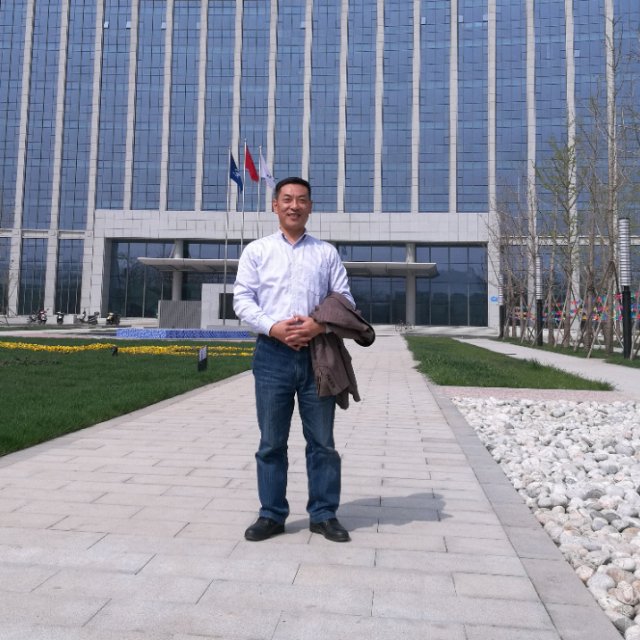Pengcheng Zhang *, Biaojie Yan, Liang Cheng, Bingqing Li, Rui Gao, Zhenliang Yang
Institute of Materials, China Academy of Engineering Physics
Abstract: Nuclear fuel is one of the key components of a reactor. Its thermophysical properties are very critical, which affect fuel efficiencies under normal operating conditions and its fault-tolerant capability under accident conditions. Poor thermal conductivity (TC) is one of the biggest disadvantages of uranium dioxide (UO2) ceramic nuclear fuel widely used in reactors. Therefore, it is of great significance to develop a new type of ceramic fuel with high thermophysical properties. However, the development of a new type of nuclear fuel has a long cycle and high costs. Applying the idea of material genome to develop nuclear fuels and carrying out the researches on high-throughput design, fabrication and characterization of nuclear fuels are quite necessary.
At present, the prevalent approach to enhancing the TC of UO2 is to inject a second phase material with a high TC, such as SiC, Mo, BeO, and diamond, into its fuel matrix, thus producing a composite fuel with dispersed or continuous second-phase. Whereas, considering the uranium density and burn-up of a composite fuel, it is expected that the target or higher TC of the fuel can be obtained with the minimum addition of the second-phase. Therefore, we consider reaching this objective and further improving the TC of the composite fuels through the perspective of structural optimization. We utilized the existing experimental data or theoretical parameters as input to finite element method (FEM) to generate massive composite samples, each of which contains the structural characteristics and the simulated thermal property. We selected the most relevant structural features related to TC through feature engineering, and then established the mapping the structural features to thermal conductivity by using machine learning methods such as neural network, so as to realize the forward prediction of composite fuel from structural characteristics to TC. Subsequently, we adopted numerical optimization method combined with the analytical formula of the predictive model to accomplish the inverse design from the target thermal property to the structural characteristics, which were verified through experimental fabrication and characterization.
In order to rapidly prepare and characterize more pellet samples corresponding to results of optimal design mentioned above, we designed and implemented the high-throughput fabrication and characterization technologies of high TC modified nuclear fuel. For high-throughput fabrication, continuous injection with batch forming and rapid sintering technique were used to prepare ceramic pellet arrays with component gradient changing. First, we prepared UO2 and powder with high thermal conductivity into suspension respectively. Then, these two kinds of suspensions were continuously injected into the array mold with different proportions changing in a gradient manner. Subsequently, the mixture suspensions were further mixed evenly by ultrasonic method and dried quickly. Finally, the pellets array with component gradient changing was prepared by spark plasma sintering. Regarding high-throughput characterization, we constructed an experimental platform consisting of a planar heat source-ceramic pallets array-infrared thermal imaging camera. The principle of this platform is that: the bottom surface of the pallets array is heated uniformly by the planar heat source; the temperature-time curve of the upper surface of each pallet in the array is collected by the infrared thermal imaging camera; then the TCs of corresponding pallets are calculated through the model we proposed for calculating TC. We took three heat transfer models, i.e., back-temperature comparison method, steady state method and unsteady state method, to analyze the obtained temperature-time curve and calculate the TC. The three methods were measured by standard samples, and the TCs obtained from the unsteady heat transfer model were the closest to the actual value. Moreover, to reduce the difference of the contact thermal resistance between different materials and plane heat source which will seriously influence the accuracy of the obtained temperature-time curve, we added the thermally conductive silicone grease on the contact surface between each test material and the plane heat source. This makes the surface temperature - time curve of the test material more close to that from unsteady heat conduction model, and further improves the accuracy of high-throughput characterization for TC. Based on the above methods of high-throughput design, preparation and characterization of ceramic nuclear fuel, we successfully developed the UO2-BeO composite pellets with high thermophysical properties and completed the assessment of the pallets in reactor, which is of great significance for the research and development of the accident tolerant fuel in China.
Keywords: Nuclear fuels; High-throughput; Thermal conductivity
核燃料高通量设计制备与表征研究进展
张鹏程*,严彪杰,程亮,李冰清,高瑞,杨振亮
中国工程物理研究院材料研究所
摘要:作为反应堆关键元件之一,核燃料的热物理性能十分关键,热导率热容等热物理性能影响燃料在正常工况下的运行效率以及燃料在事故工况下的容错能力。而导热性差是目前广泛应用的二氧化铀陶瓷型核燃料的最大缺点,所以研发新型高热物性能的核燃料很有意义。但是核燃料的研发周期长、研发成本高,必须依靠系统的理论进行指导。将材料基因组的思想应用于核燃料领域,开展核燃料的高通量设计、制备与性能表征,对于新型高热物性能核燃料的研发具有重要意义。目前,通过向UO2为基体中掺入Mo、SiC、BeO和Diamond等高热导率材料制备复合燃料是国内外提高陶瓷型燃料的热导率主要方法之一。而第二相添加量同时又受到燃料铀装量与燃耗的限制。为了实现在第二相添加尽量少的条件下实现目标热导率,我们通过研究不同形式复合燃料的组织结构(弥散型与连续网状型)与热导率的关系,来实现燃料的优化设计。我们结合已有实验或理论参数,通过有限元模拟产生大量包含组织图像与热导率性能的复合燃料样本,通过数据挖掘方法选取了与热导率最相关的结构特征(从图像提取),然后采用神经网络等机器学习的方法建立了复合燃料组织结构到热导率的映射,实现了复合燃料从结构特征到热导率的正向预测。随后我们采用数值优化方法结合正向预测的解析式实现了从目标热导率到组织结构的反向设计,并通过实验制备与表征验证了方法的准确性与可行性。为了更加快速的制备、表征满足上述核燃料优化设计的芯块样品,我们设计并实现了高热导率改进型核燃料的高通量制备与热导率表征技术。对于核燃料高通量制备,我们采用连续加注批量成形快速烧结技术来制备成分梯度变化的陶瓷芯块阵列。首先,我们将二氧化铀及高导热增强相粉末原料分别配制成悬浮液,然后向阵列模具中连续加注不同配比的两种悬浮液,其比例成梯度变化,再通过超声方法将悬浮液混合均匀后快速烘干,最后采用气氛烧结制备得到成分梯度变化的芯块阵列。对于热导率的高通量表征,我们搭建了由平面热源-陶瓷芯块阵列-红外热成像相机组成的实验平台,采用平面热源均匀加热芯块阵列的一面,再通过红外热成像相机采集芯块阵列上表面温度-时间曲线,最后通过导热模型计算得到相应的热导率。我们采用不同热导率的材料,包括石墨、钢和钨-铜合金等相关标样进行了测试分析,获得了相应的表面温度-时间曲线。我们采用背温对比法、稳态法、以及非稳态法三种传热模型对获得的温度-时间曲线进行分析和热导率计算。通过标样对三种方法进行衡量,根据非稳态法传热模型得到的热导率与实际值最为接近。同时,为了解决不同材料与平面热源接触热阻的差异而导致获得的热导率的不准确性,我们在测试材料与平面热源的接触面上增加了导热硅脂,使得获得的表面温度-时间曲线与非稳态导热模型更为接近,进一步提高了热导率高通量表征的准确性。基于上述核燃料的高通量设计、制备与表征的方法,我们成功制备出高热导率的UO2-BeO新型燃料芯块,并完成了入堆考核,对于我国新型事故容错燃料的研究与发展具有非常重大的意义。
关键词:核燃料;高通量;热导率

工学博士,研究员,核燃料循环与材料专业博士生导师,四川省有突出贡献优秀专家,国务院政府津贴获得者。中国物理学会X射线衍射和中国晶体学会粉末衍射联合委员会委员,中国核学会核材料分会理事,中国电工学会离子朿电子束专委会委员,中国特种陶瓷学会理事,中国腐蚀学会应力腐蚀与氢脆专委会委员,中国电镜学会理事,四川省电镜学会副理事长,四川省核学会核材料与装置专委会副主任,成都市材料学会副理事长。先后负责863计划,ITER计划,国家自然科学基金重点项目,国家重大仪器开发专项等十余项课题,公开发表论文六十余篇,获省部级和军队科技进步奖一、二等奖十余项。
Email: 13981102769@163.com